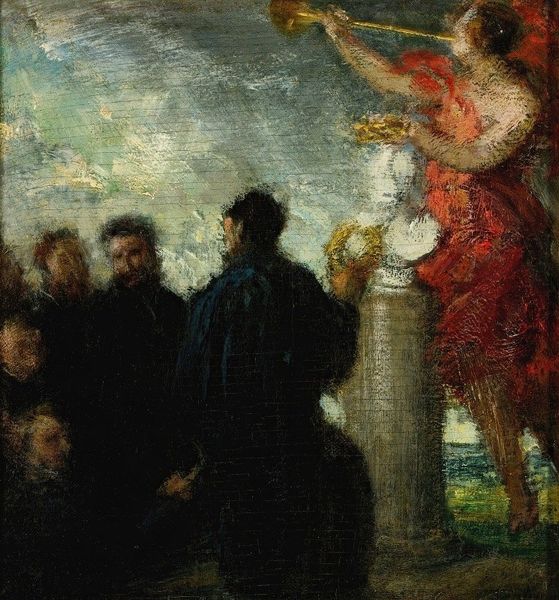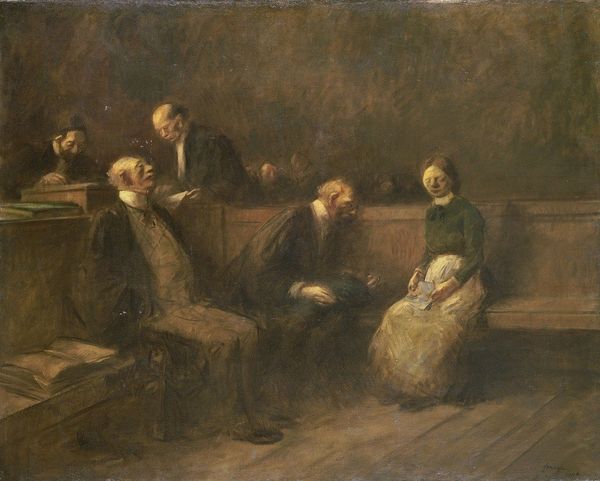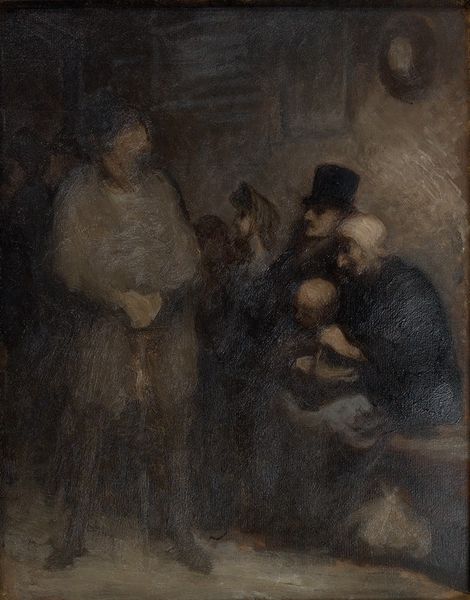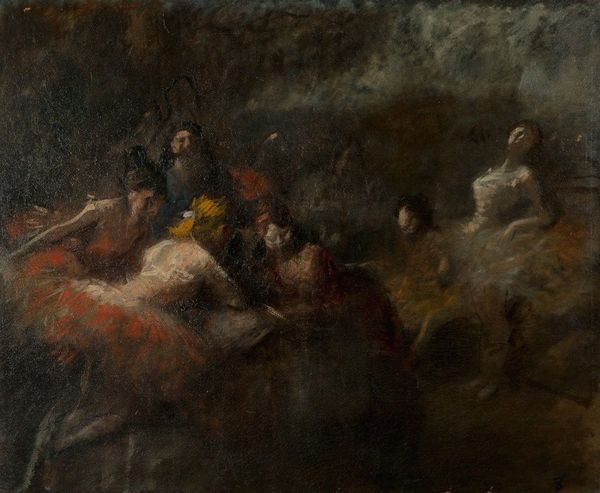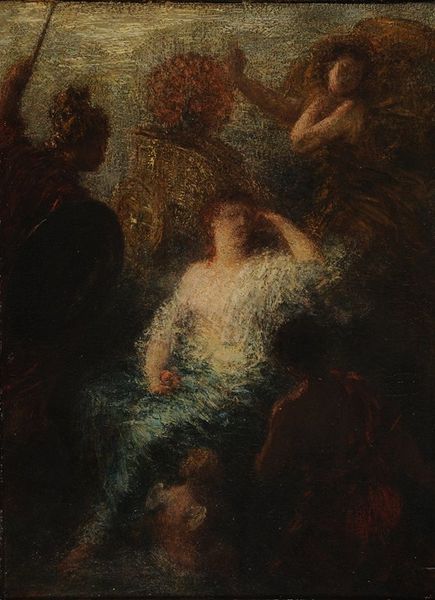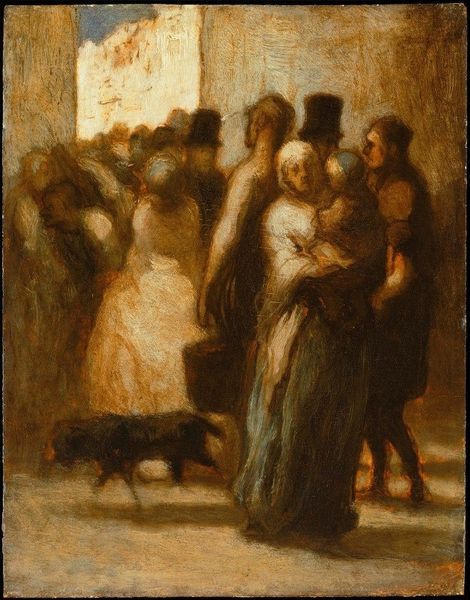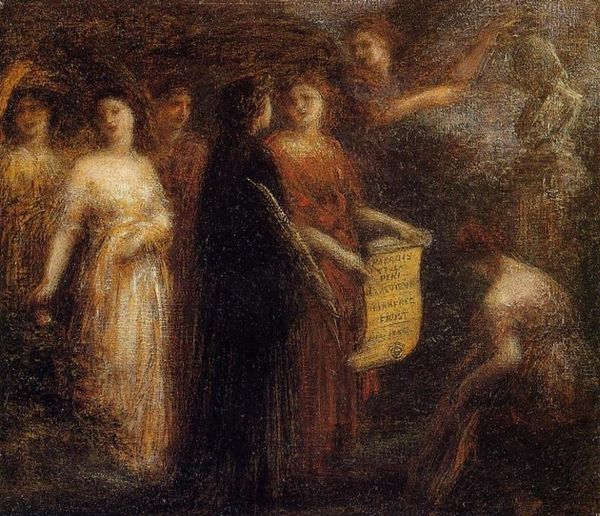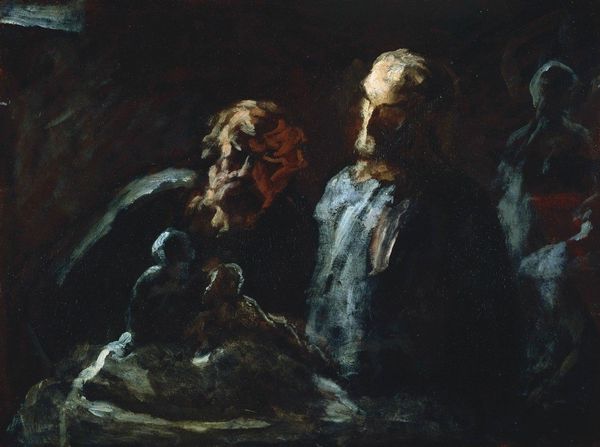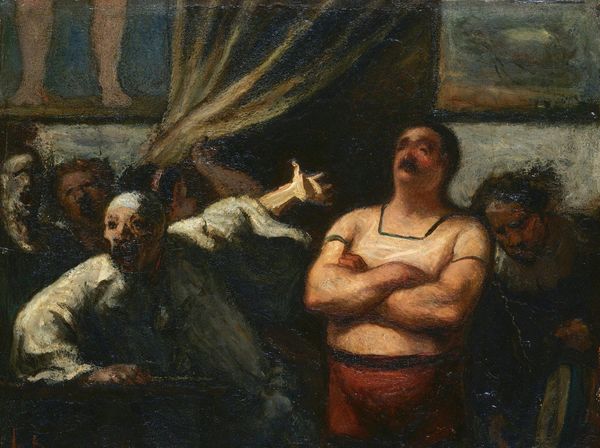
Copyright: Public Domain: Artvee
Curator: Henri Fantin-Latour's "Esquisse pour l’Hommage à Delacroix," painted in oil around 1863-1864, presents a compelling, though somewhat shadowy, scene. Editor: Shadowy is right. My first impression is one of veiled solemnity. It's difficult to make out details, but the dark palette and clustered figures give the impression of a very serious occasion. Curator: Indeed. It’s a preparatory sketch, a study really, for a larger, more finished painting. The composition, even in this state, reveals Fantin-Latour's understanding of spatial arrangement and figure grouping. Notice the central placement of the monument, acting as a focal point around which the figures are organized. Editor: The central monument immediately brings to mind historical narratives around Great White Men of History. I'm struck by who isn't visible, whose labor made it possible for Delacroix to create art and for Fantin-Latour to make art about him. Where are the women artists? Where are the artists of color? Curator: A fair point, and not uncommon for academic art of the period. Delacroix himself was a figure steeped in Romanticism, so it seems fitting that this homage adopts a similar style. One can observe how the brushstrokes are loose and expressive, creating a sense of movement and emotion. The use of chiaroscuro, the contrast between light and dark, enhances the dramatic effect. Editor: That “dramatic effect” seems to reinforce Delacroix’s image as a celebrated male genius at a time when rigid academic standards excluded anyone who wasn't a white man from participating. The "emotion" you describe seems more like reverence and risks obscuring the structures of power at play. This makes me wonder, what does it mean to "homage" such a figure when that figure has become emblematic of inequality? Curator: I suppose the artistic intention would have been to venerate Delacroix's contribution to painting through innovative use of color and dynamic composition, and to acknowledge his impact on subsequent generations of artists, but to your point, that doesn’t negate other perspectives. Editor: Agreed. Maybe seeing the gaps – in representation, in artistic access – can be productive if it prompts viewers to become more aware of what and who shapes art history. Curator: Yes, examining the structures is essential, especially when contemplating the composition in relation to legacy and how these “homages” may be perceived.
Comments
No comments
Be the first to comment and join the conversation on the ultimate creative platform.
